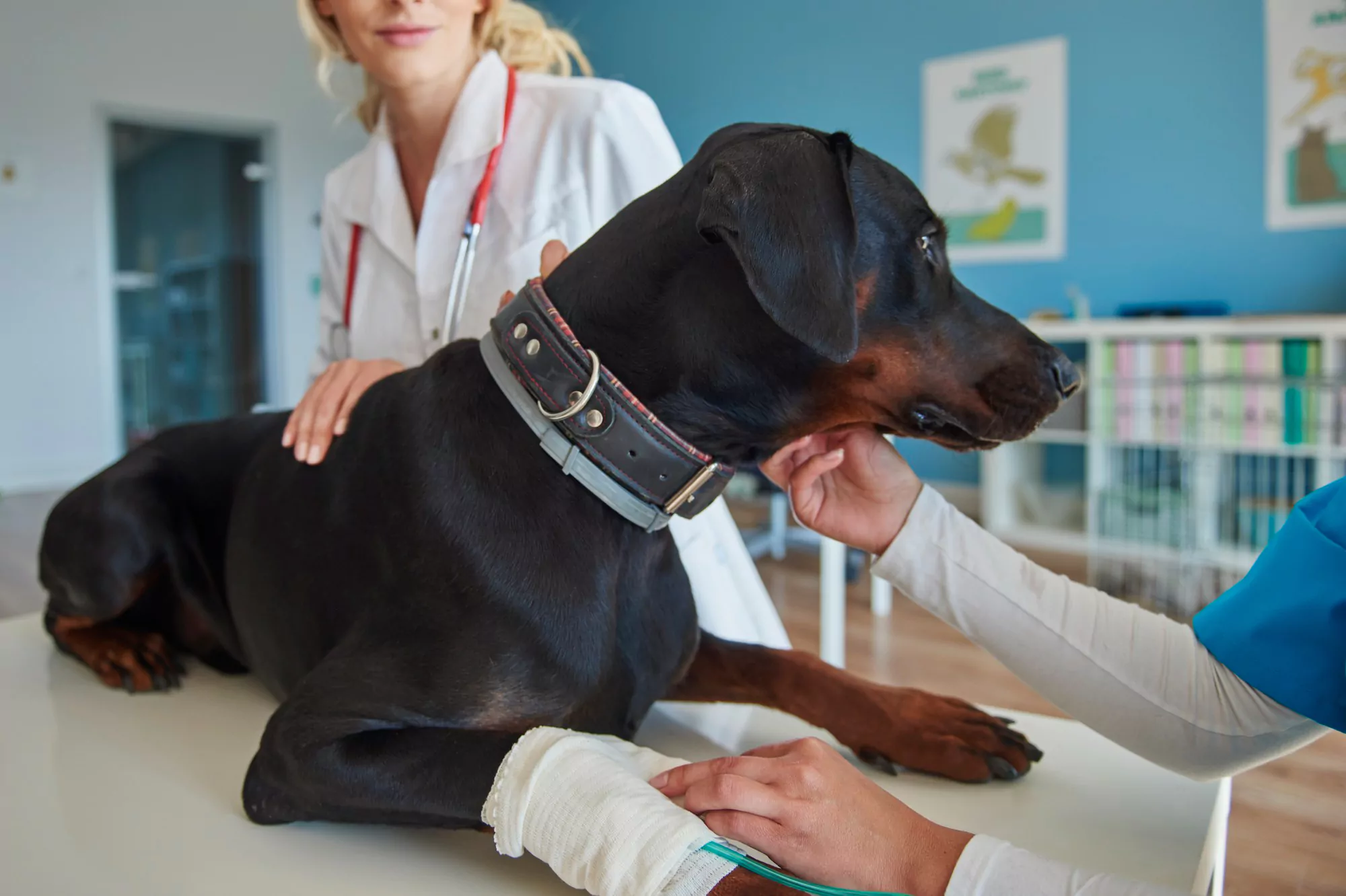Abstract
A 5-year-old spayed female Maltese dog experienced global brain ischemia (GBI) with multiorgan dysfunction syndrome (MODS) after suffering severe bite wound trauma. This article details the diagnostic and treatment journey, underlining the valuable role of magnetic resonance imaging (MRI) in identifying GBI, and emphasizes the importance of considering GBI in differential diagnoses when non-progressive neurological dysfunctions arise in hypotensive or hypoxic events. Long-term medical management proved essential for the patient’s partial recovery.
Introduction
Bite wounds are common yet potentially severe injuries in domestic dogs that demand immediate medical attention. Ranging from superficial abrasions to penetrating deep-tissue damage, the impact of a bite wound can provoke a cascade of systemic health issues, including multiorgan dysfunction syndrome (MODS), and even result in global brain ischemia (GBI) under certain conditions. This condition signifies a widespread reduction of blood flow to the brain, often stemming from life-threatening events like cardiac arrest, shock, or severe hypotension.
DOI: 10.1186/s13028-019-0458-0
Case Report
First published in *Acta Veterinaria Scandinavica*, this case reports on a Maltese dog, which, after being severely bitten by another animal, suffered penetrating abdominal injuries necessitating blood transfusions, antibiotics, and emergency surgery (Lee Ga-Won et al., 2019). Days following the incident, the dog developed neurological impairments including generalized seizures, ataxia, and diminished consciousness. Given its recent bite-wound trauma and clinical presentation, MODS and intracranial hypoxic damage with elevated intracranial pressure were suspected, leading to further investigation and eventual diagnosis of GBI.
Clinical Findings and Diagnosis
MRI played an instrumental role in confirming GBI in this patient. Diffuse elevation in signal intensity on T2-weighted and fluid-attenuated inversion recovery (FLAIR) imagery, particularly in the brain’s grey matter regions, suggested acute brain ischemic injury. These findings were corroborated by high signal intensity on diffusion-weighted imaging (DWI), underscoring its diagnostic utility for GBI (Neumann et al., 2013).
Treatment and Management
Over a 10-month period, the attending veterinarians navigated the complexities of managing both GBI and MODS. Long-term medical management strategies encompassed antibiotics, anticonvulsants, and antioxidants targeting the resulting oxidative stress from ischemic injury (Collard et al., 2001). Despite these efforts, the Maltese dog experienced lasting effects, such as intermittent circling and cognitive dysfunction.
Discussion
Global brain ischemia is a critical condition that may be induced by systemic physiological stresses, as evidenced in this case by bite wound-related trauma. It underscores a vital clinical point: the necessity for prompt identification and treatment of systemic complications following bite injuries, to mitigate the risks of GBI and MODS (Ateca et al., 2014; Hauptman et al., 1997).
The case exemplifies the importance of thorough follow-up in animals with significant traumatic injuries, as post-traumatic complications may develop or manifest in delayed fashion, necessitating vigilant monitoring and an aptitude for responsive intervention (Cavana et al., 2009; Hackett, 2011).
Conclusion
The basis of successful outcomes in such complicated cases resides in the rigorous adherence to clinical diagnostics and treatment protocols while flexibly adjusting to individual patient responses. This case demonstrates that with comprehensive medical management, including diligent neurological assessment and supportive care, some degree of recovery can be attainable even in the direst circumstances.
References
1. Ateca LB, Drobatz KJ, King LG. (2014). Organ dysfunction and mortality risk factors in severe canine bite wound trauma. J Vet Emerg Crit Care 24:705–714. doi:10.1111/vec.12256.
2. Oehler RL, Velez AP, Mizrachi M, Lamarche J, Gompf S. (2009). Bite-related and septic syndromes caused by cats and dogs. Lancet Infect Dis 9:439–447. doi:10.1016/S1473-3099(09)70110-0.
3. Johnson V, Gaynor A, Chan DL, Rozanski E. (2004). Multiple organ dysfunction syndrome in humans and dogs. J Vet Emerg Crit Care 14:158–166. doi:10.1111/j.1534-6935.2004.04016.x.
4. Lee Ga-Won, Park Hee-Myung, Kang Min-Hee. (2019). Global brain ischemia in a dog with concurrent multiorgan dysfunction syndrome after bite wound trauma. Acta Vet Scand 61:22. doi:10.1186/s13028-019-0458-0.
5. Neumann JT, Cohan CH, Dave KR, Wright CB, Perez-Pinzon MA. (2013). Global cerebral ischemia: synaptic and cognitive dysfunction. Curr Drug Targets 14:20–35. doi:10.2174/138945013804806514.
Keywords
1. Global brain ischemia in dogs
2. Multiorgan dysfunction syndrome canine
3. MRI diagnosis canine brain injury
4. Bite wound complications veterinary
5. Dog trauma treatment and recovery
